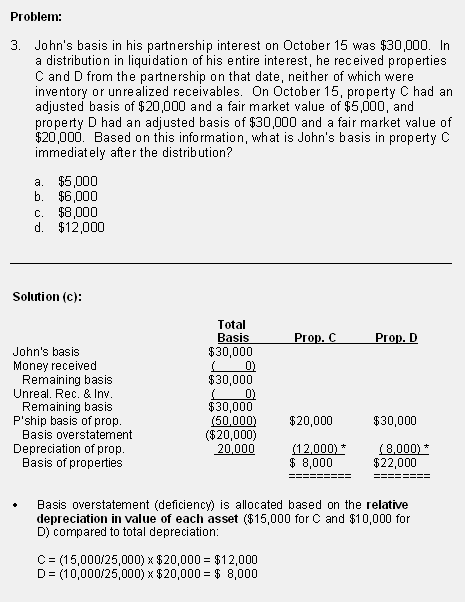What are Liquidation Distributions
Post on: 24 Июнь, 2015 No Comment

Complete Liquidation
In a complete liquidation, the company transfers 100 percent of its assets and liabilities to the shareholders. The company often hires an outside business to manage the liquidation process. The first step in the liquidation process involves identifying the companys assets and liabilities. As long as sufficient assets exist to satisfy the creditor liabilities, the creditors are paid off. If there is not enough in assets to satisfy the creditor liabilities, each creditor receives a percentage of the debt. If additional assets exist after the creditors are satisfied, the remaining amount is distributed to the shareholders.
Capital Gain or Loss
The shareholders who receive a partial or complete liquidation distribution need to determine if they experience a capital gain or capital loss as a result. The shareholder needs to know his basis in each share of stock. After looking at his records to determine what he paid for the stock, the shareholder compares this amount to the amount received in the liquidation distribution. If the liquidation distribution is greater than the shareholders basis in the stock, he experiences a capital gain. If the liquidation distribution is less than the shareholders basis in the stock, he experiences a capital loss. The shareholder will pay taxes on any capital gains.
Provisional Liquidation
References
More Like This
Are Cash Liquidation Distributions Taxable?
You May Also Like
The IRS states that qualified distributions out of a Roth or traditional IRA can be taken once the IRA owner reaches age.
Liquidation is usually the last stage of a workout plan or bankruptcy proceeding for a company. It occurs when it has been.
An individual retirement account can be used to invest annual savings for retirement or as a rollover location for funds from an.
Comments. You May Also Like. Penalty for Not Filing IRS Form 966. The United States Internal Revenue Service Form 966, Corporate Dissolution.
It is important to liquidate an LLC that is no longer operational to prevent continued annual fees and taxes on a closed.
Mutual funds are required to distribute realized capital gains to shareholders at least once a year. Most funds will make the distributions.
Capital Gains Rules for Mutual Funds. Mutual funds avoid the need to pay capital gains taxes by passing on gains to shareholders.














